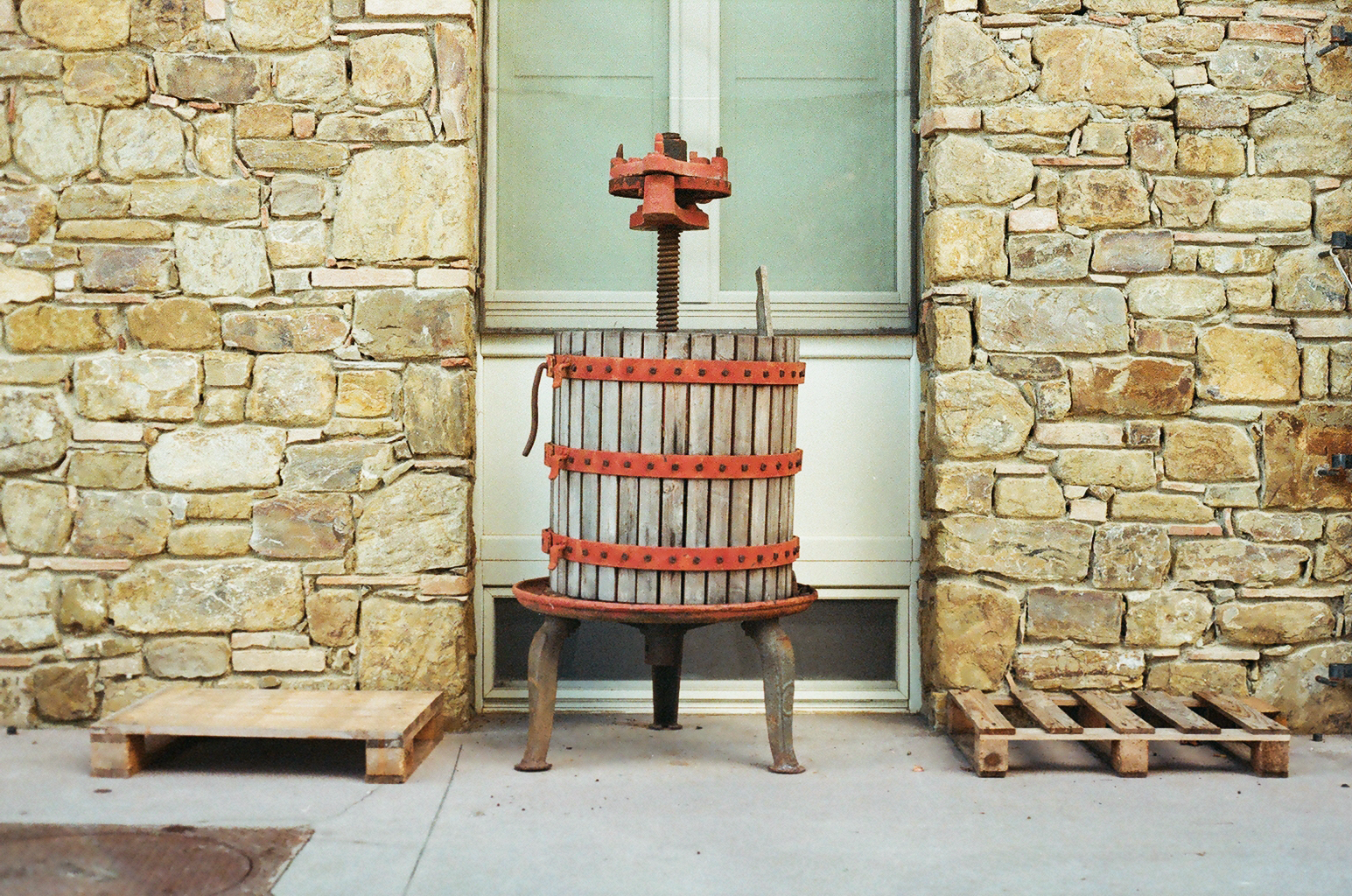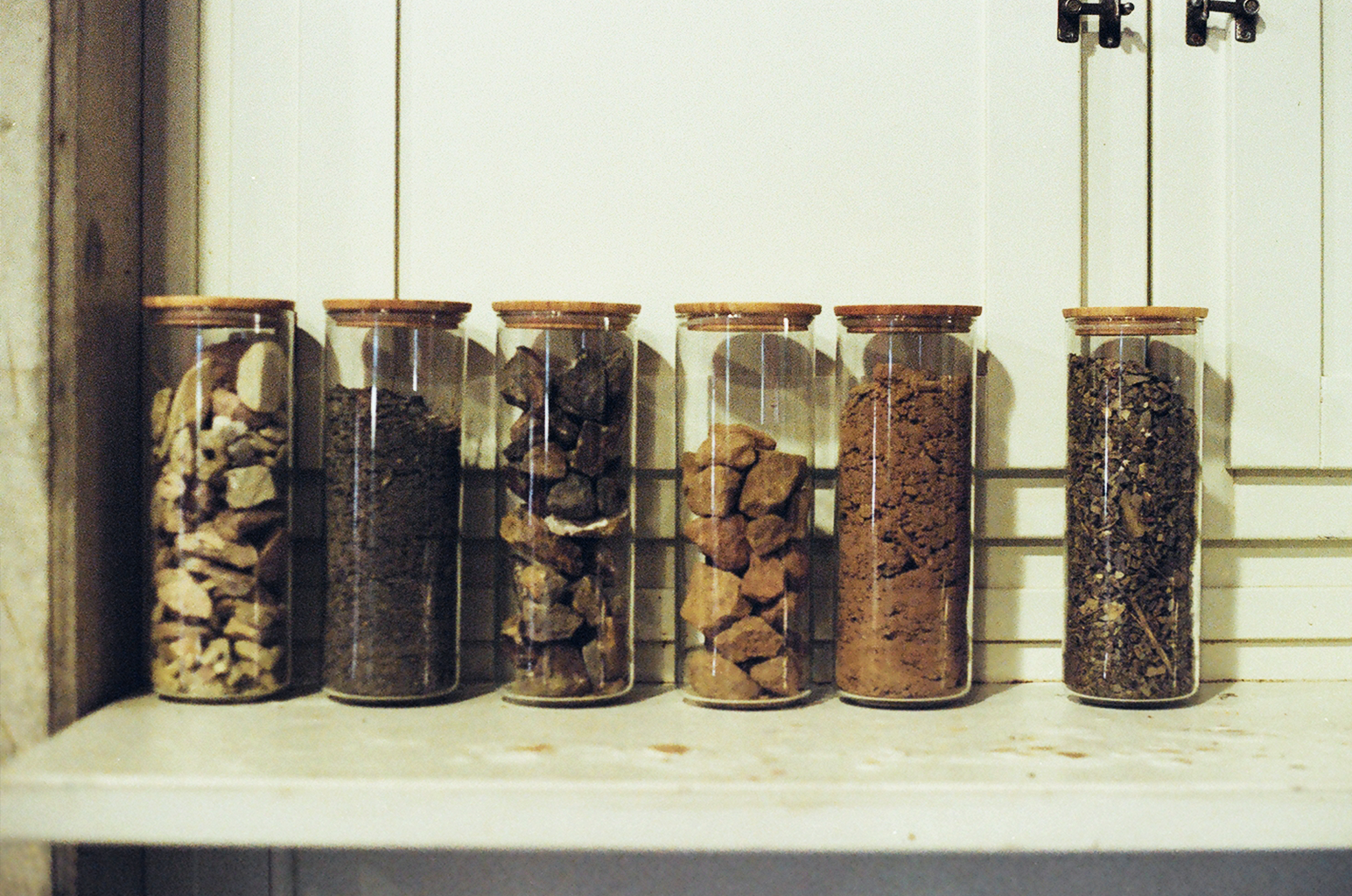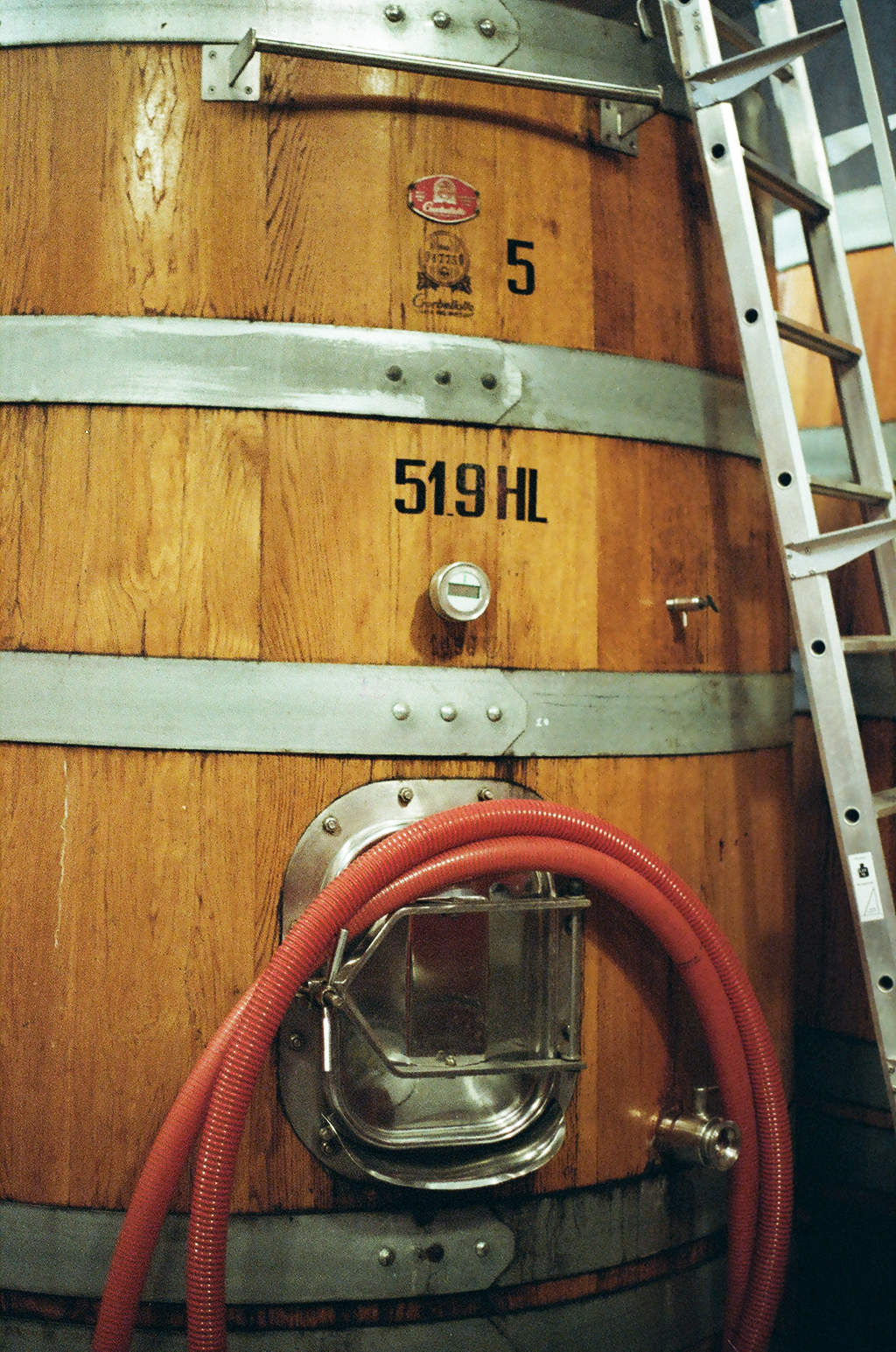In the mother land of Brunello
Kristen and Peter Kern of Il Palazzone and their story of winemaking.
Montalcino rises in dramatic folds of clay-limestone and fractured galestro, a landscape sculpted by centuries of wind, altitude, and sun, and the Sangiovese that grows here carries every one of those lessons. Brunello di Montalcino is among Italy’s most strictly governed wines — always 100% Sangiovese, aged a minimum of two years in wood, and released no earlier than January of the fifth year after harvest. Within that structure lies a spectrum, from dense, dark, power-driven interpretations to those that favor translucence, fine grain, and elegance. Il Palazzone sits firmly in the latter tradition, and spending time with the team behind it makes clear that their restraint is not nostalgia; it is intention.
Il Palazzone owner Kristen Kern trained as a chef and worked at New York’s famed Chanterelle before traveling the world and fulfilling her dream of owning a vineyard in Montalcino. Alongside her, Peter Kern manages the vineyard and cellar, ensuring the wines reflect the estate’s philosophy of elegance and restraint.
Walking the rocky parcels with Kristen and Peter, we talked not about fashion or flash. Instead, they spoke of patience, texture, and the invisible choices that shape a glass. One element they return to often is the brief rest their Brunello takes in cement before bottling, a traditional practice revived for a modern reason.
“Cement is like a spa for the wine,” Kristen said. “Everything settles. The tannins line up, and the polyphenols arrange around them. Instead of long, unruly chains, you get shorter, finer ones.” Bottling, by contrast, is a shock: movement, pressure, turbulence. Cement offers a reset, a chance for the wine to recombine and find equilibrium before the bottle locks it in time. “You can’t really drink it for a while after bottling,” Peter added. “It gets agitated. This settles it first.”
That clarity of intention carries through their blending process. Each tank, even from the same parcel, tastes different. They taste everything, then assemble the final Brunello toward a house expression: elegant, balanced, fresh, and deeply drinkable with food.
“We’re not chasing the ‘best’ tank, we’re chasing Il Palazzone: elegant, balanced, fresh.”
We put pieces together until the blend is better than any part.” Pre-blends go back into large casks to integrate, then to cement to harmonize further. What doesn’t serve the final Brunello does not get discarded. It becomes part of their Rosso di Montalcino, which they view not as a by-product but as its own deliberate wine.
“Rosso should be by-the-glass delicious and great value,” they said. “Same grapes, same attention, just a different brief.” Importantly, nothing crosses vintages here. “Brunello and Rosso are vintage-true. You cannot add even 5% from another year.”
The vineyards themselves explain much about the style. Some parcels date to the 1970s, roots deep in alternating layers of galestro — brittle, ancient seabed shale that breaks underfoot and drains quickly — and clay-limestone, which holds water and lends structure. At roughly 400–600 meters elevation, the fruit ripens with tension rather than abundance.
“Down in the valley it’s often ten degrees warmer,” they noted. “Heat drives sugar and alcohol. Up here we keep lift and perfume.” When the wind comes across the slope, you smell herbs and earth; when the sun drops, temperatures fall fast. It is a site that produces clarity over density, fragrance over force.
Style here is a decision, not an accident. They describe two broad branches of Brunello today: the deep, dark, extracted, steakhouse style, and the old-school ruby, lifted, finely structured version. They embrace the latter wholeheartedly. Alcohol rarely climbs above 14%, and when it does, it never feels hot because the balance of fruit, acidity, and tannins remains intact.
Peter summed up their philosophy: “We love what Brunello was. That is what we’re dedicated to making.” He sees the rules — dry farming, minimum aging, 100% Sangiovese, vintage integrity — not as obstacles, but as scaffolding. “You’re not allowed to irrigate,” he added. “The rules protect what Brunello is.”
Their philosophy extends to the cellar, where the goal is thoughtful intervention, never cosmetic minimalism.
“This is craft,” Kristen said. “You don’t make a painting by not touching paint. We avoid additives and heavy manipulation, but we do what the grapes need.” In colder harvests, that means building a pied de cuve, a small early fermentation used to seed primary fermentations and cultivate native yeast for a clean, stable start.
“Minimal intervention with a purpose: stability and a clean native start. If you just dump cold fruit in a vat and wait, you risk spoilage. So yes, we touch the grapes — intelligently.”
Vintage differences are not marketing jargon. They are lived realities. During our visit, we tried two vintages. The 2019 shows classic generosity with rounder fruit, broader texture, and immediate charm. The 2020 is more mineral and tensile, shaped by weather challenges and lower yields, with a quieter depth that rewards patience. Which you prefer depends on your palate, your mood, and perhaps the food in front of you. Both speak clearly of place and intent, wines you lean closer to rather than step back from.
Life at Il Palazzone mirrors the wine: slow-moving, exacting, rooted. Olive trees share the land, and oil, often sold by subscription — sometimes with your name on a tree — is part of the estate’s rhythm. In town, medieval contrada flags fly for archery rivalries, and streets turn into long communal dinners when a neighborhood wins. Even new buildings tuck quietly into hillsides, with materials and windows chosen to protect the vista. Nothing here is hurried; nothing is accidental.









